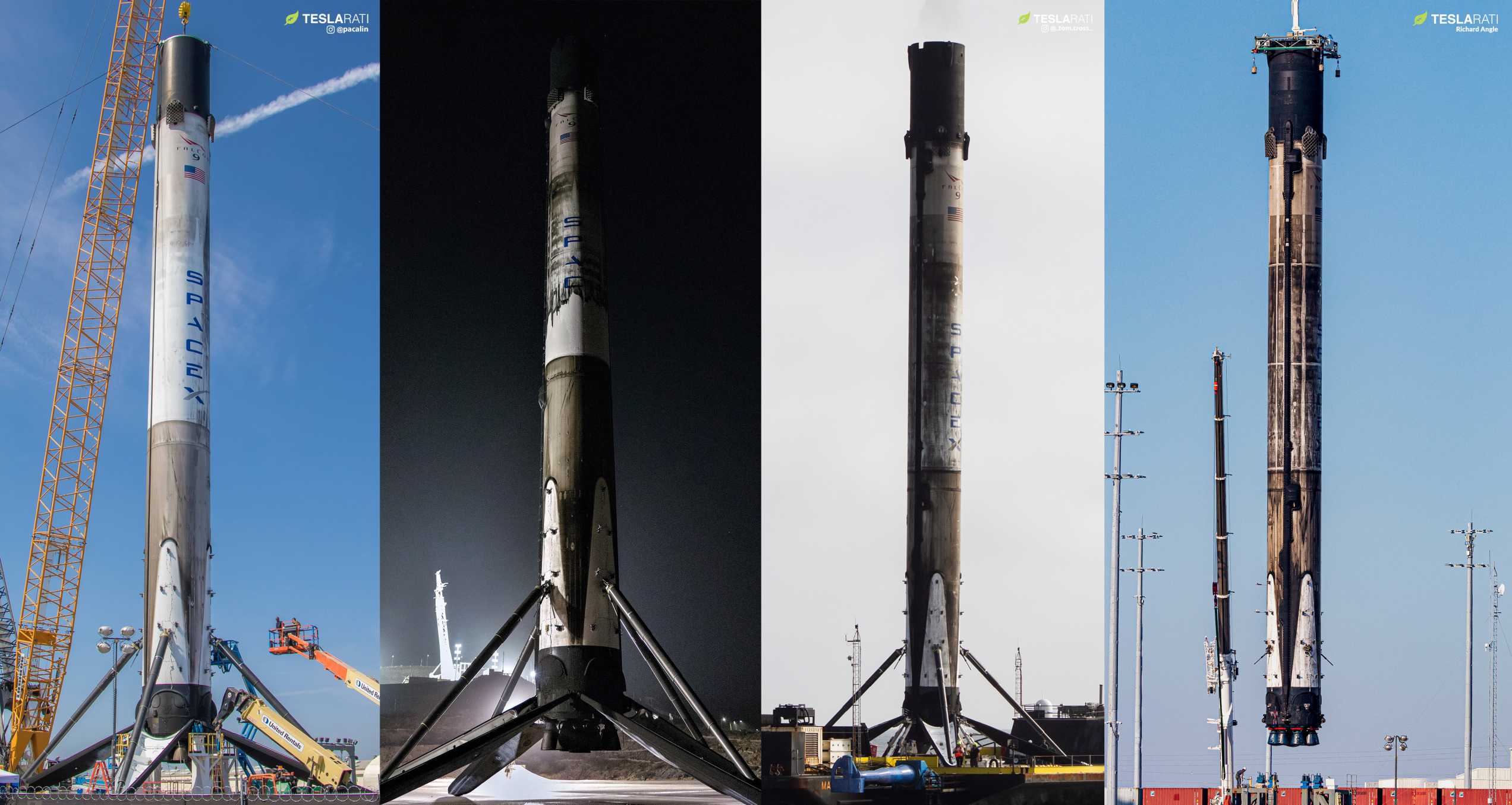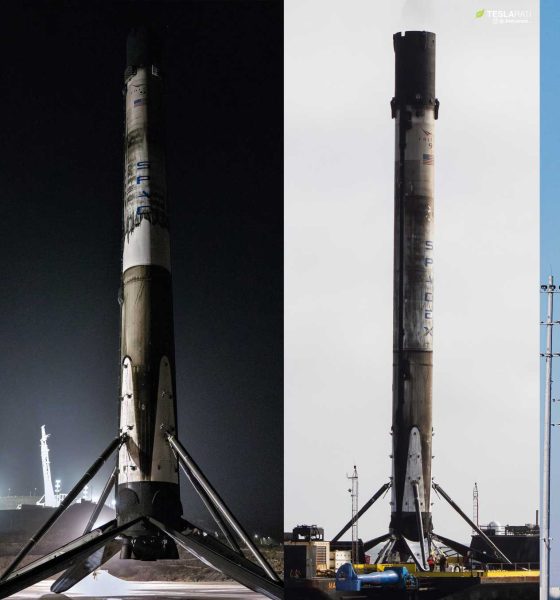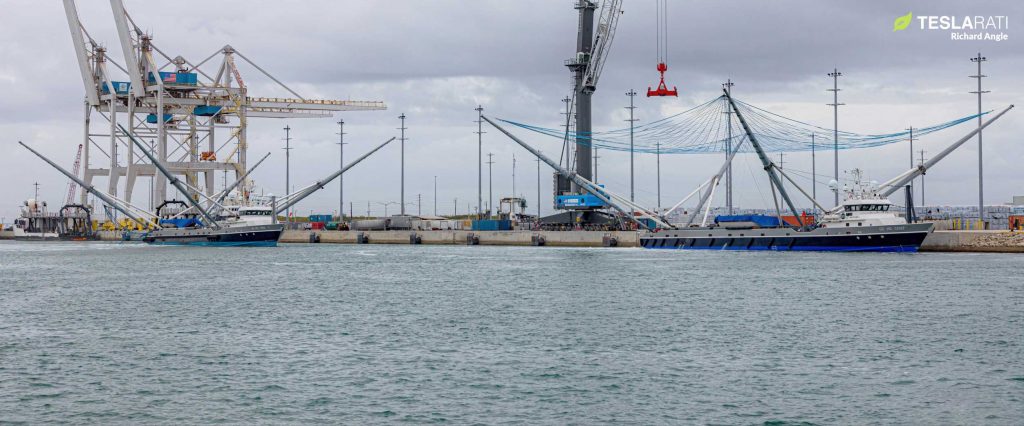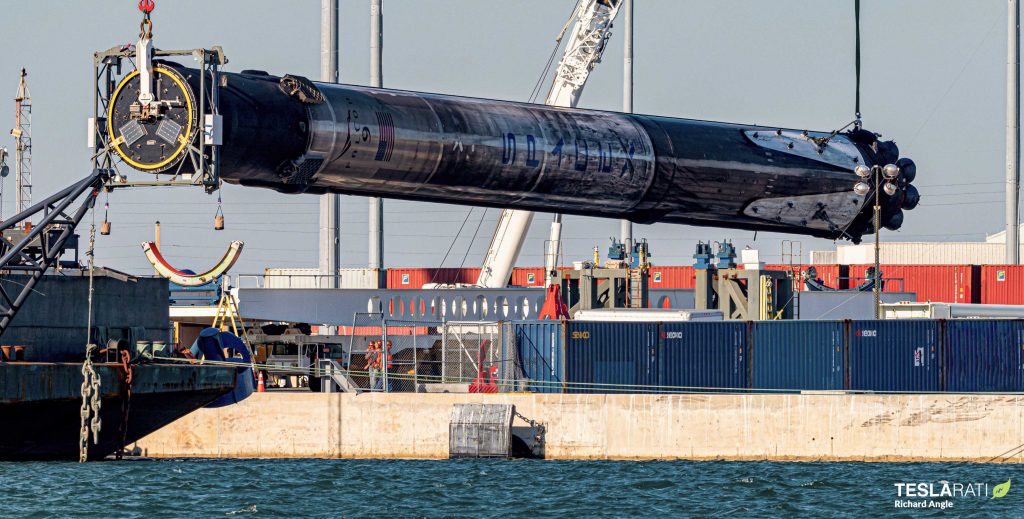

News
SpaceX's workhorse rocket is almost halfway to reaching ambitious reusability goals
Thanks to a recent cluster of major milestones, SpaceX’s family of Falcon 9 and Heavy rockets are rapidly nearing the halfway point along the path to several ambitious goals for booster and fairing reusability.
Back in the early 2010s, SpaceX’s CEO Elon Musk’s original dream was to make Falcon 9 and Falcon Heavy 100% reusable, meaning that the company would need to find ways to reliably recover boosters (first stages), payload fairings (or Dragon spacecraft), and the rocket’s upper (second) stages. The concept of Falcon 9 second stage reuse actually survived all the way into 2018 before Musk ultimately conceded defeat, accepting that Falcon 9 and Heavy simply didn’t offer the performance necessary to make full reusability a worthwhile investment. The concept, however, still lives on in SpaceX’s next-generation Starship launch vehicle.
This does mean Falcon rockets will never be fully reusable, but it’s still up to SpaceX to decide how far they’ll push the envelope with the rockets’ existing reusable hardware. At the moment, it appears that a vast majority of Falcon rockets will be able to be routinely recovered and reused, capitalizing on the fact that Falcon 9 and Falcon Heavy boosters already represent some 50-75% of the cost of building each two-stage rocket. While Falcon upper stages and Dragon trunks will never be reused, both booster and payload fairing reuse are rapidly approaching their own unique halfway points on the path to ambitious reusability targets.


Shortly after SpaceX’s January 29th Starlink V1 L3 launch, carrying the third batch of 60 upgraded v1.0 satellites to orbit, twin fairing recovery ships GO Ms. Tree (formerly Mr. Steven) and Ms. Chief teamed up for their second-ever simultaneous fairing catch attempt. Ms. Chief – only active since November 2019 – reportedly just barely missed her first successful catch, while Ms. Tree managed to snag one of the Falcon 9 fairing halves in her massive net – the ship’s third successful catch.
Worth an estimated $3M per half according to CEO Elon Musk, Falcon 9’s payload fairing represents approximately 10% of the rocket’s total manufacturing cost. Made out of a carbon fiber and aluminum honeycomb composite material, fairings also also takes a disproportionate amount of time and space to produce – primarily due to their large size (a school bus could comfortably fit inside a fairing) and the need for commensurately large curing ovens. That composite honeycomb structure also makes it relatively easy for Falcon payload fairings to suffer from corrosion when dunked in seawater, leading SpaceX to the seemingly bizarre solution of installing giant arms and nets on ships.


Catching fairings has proven to be incredibly unforgiving, however, and SpaceX has simultaneously worked to make its Falcon fairings much more waterproof (and thus resistant to corrosion) while keeping them as light as possible. In fact, SpaceX’s first fairing reuse occurred less than three months ago and used two halves that previously landed in the Atlantic Ocean, demonstrating that difficulties reliably catching fairings will not stand in the way of reuse.
Ms. Chief missed her January 29th catch attempt, she still managed to fish her fairing half out of the ocean, while Ms. Tree’s successfully-caught half means that SpaceX ultimately recovered the full Starlink V1 L3 fairing. With a little luck, that recovered fairing will launch again in the near future.
Five for 5
Simultaneously, SpaceX is making excellent progress along the path to airliner-like rocket reusability. In November 2019, on the same Starlink mission that debuted flight-proven fairings, Falcon 9 booster B1048 became the first SpaceX rocket to launch (and land) four times. Less than two months later, Falcon 9 B1049 doubled down on that reusability milestone, becoming the second booster to launch and land four times, followed by Falcon 9 B1046 just 12 days later. Falcon 9 B1046 was (intentionally) destroyed after its fourth launch, precluding a fourth landing attempt, but it emphasizes just how confident SpaceX is in Falcon 9’s Block 5 upgrade.

Designed to allow each Falcon 9 and Heavy booster to perform a minimum of 10 launches and landings, the Block 5 upgrade is potentially just a few weeks away from reaching the halfway point along the path to that ambitious reusability design goal. Speaking at the NASA Kennedy Space Center earlier this month, a SpaceX engineer recently revealed that a Falcon 9 booster would conduct its fifth launch in support of a Starlink mission (either Starlink V1 L4 or L5) scheduled no earlier than (NET) mid-to-late February.
Pictured above, Falcon 9 booster B1048 – the first to launch four times – is the likeliest candidate for the first fifth flight of a SpaceX rocket. If the booster’s reuse goes as planned, it’s safe to say that Falcon 9 B1049.4 will follow closely on the heels of its predecessor with its own fifth-flight milestone. All things considered, SpaceX’s workhorse rocket is rapidly approaching the zenith of its theoretically-achievable reusability.
Check out Teslarati’s Marketplace! We offer Tesla accessories, including for the Tesla Cybertruck and Tesla Model 3.

Elon Musk
Elon Musk and Tesla AI Director share insights after empty driver seat Robotaxi rides
The executives’ unoccupied tests hint at the rapid progress of Tesla’s unsupervised Robotaxi efforts.

Tesla CEO Elon Musk and AI Director Ashok Elluswamy celebrated Christmas Eve by sharing personal experiences with Robotaxi vehicles that had no safety monitor or occupant in the driver’s seat. Musk described the system’s “perfect driving” around Austin, while Elluswamy posted video from the back seat, calling it “an amazing experience.”
The executives’ unoccupied tests hint at the rapid progress of Tesla’s unsupervised Robotaxi efforts.
Elon and Ashok’s firsthand Robotaxi insights
Prior to Musk and the Tesla AI Director’s posts, sightings of unmanned Teslas navigating public roads were widely shared on social media. One such vehicle was spotted in Austin, Texas, which Elon Musk acknowleged by stating that “Testing is underway with no occupants in the car.”
Based on his Christmas Eve post, Musk seemed to have tested an unmanned Tesla himself. “A Tesla with no safety monitor in the car and me sitting in the passenger seat took me all around Austin on Sunday with perfect driving,” Musk wrote in his post.
Elluswamy responded with a 2-minute video showing himself in the rear of an unmanned Tesla. The video featured the vehicle’s empty front seats, as well as its smooth handling through real-world traffic. He captioned his video with the words, “It’s an amazing experience!”
Towards Unsupervised operations
During an xAI Hackathon earlier this month, Elon Musk mentioned that Tesla owed be removing Safety Monitors from its Robotaxis in Austin in just three weeks. “Unsupervised is pretty much solved at this point. So there will be Tesla Robotaxis operating in Austin with no one in them. Not even anyone in the passenger seat in about three weeks,” he said. Musk echoed similar estimates at the 2025 Annual Shareholder Meeting and the Q3 2025 earnings call.
Considering the insights that were posted Musk and Elluswamy, it does appear that Tesla is working hard towards operating its Robotaxis with no safety monitors. This is quite impressive considering that the service was launched just earlier this year.
Elon Musk
Starlink passes 9 million active customers just weeks after hitting 8 million
The milestone highlights the accelerating growth of Starlink, which has now been adding over 20,000 new users per day.

SpaceX’s Starlink satellite internet service has continued its rapid global expansion, surpassing 9 million active customers just weeks after crossing the 8 million mark.
The milestone highlights the accelerating growth of Starlink, which has now been adding over 20,000 new users per day.
9 million customers
In a post on X, SpaceX stated that Starlink now serves over 9 million active users across 155 countries, territories, and markets. The company reached 8 million customers in early November, meaning it added roughly 1 million subscribers in under seven weeks, or about 21,275 new users on average per day.
“Starlink is connecting more than 9M active customers with high-speed internet across 155 countries, territories, and many other markets,” Starlink wrote in a post on its official X account. SpaceX President Gwynne Shotwell also celebrated the milestone on X. “A huge thank you to all of our customers and congrats to the Starlink team for such an incredible product,” she wrote.
That growth rate reflects both rising demand for broadband in underserved regions and Starlink’s expanding satellite constellation, which now includes more than 9,000 low-Earth-orbit satellites designed to deliver high-speed, low-latency internet worldwide.
Starlink’s momentum
Starlink’s momentum has been building up. SpaceX reported 4.6 million Starlink customers in December 2024, followed by 7 million by August 2025, and 8 million customers in November. Independent data also suggests Starlink usage is rising sharply, with Cloudflare reporting that global web traffic from Starlink users more than doubled in 2025, as noted in an Insider report.
Starlink’s momentum is increasingly tied to SpaceX’s broader financial outlook. Elon Musk has said the satellite network is “by far” the company’s largest revenue driver, and reports suggest SpaceX may be positioning itself for an initial public offering as soon as next year, with valuations estimated as high as $1.5 trillion. Musk has also suggested in the past that Starlink could have its own IPO in the future.
News
NVIDIA Director of Robotics: Tesla FSD v14 is the first AI to pass the “Physical Turing Test”
After testing FSD v14, Fan stated that his experience with FSD felt magical at first, but it soon started to feel like a routine.

NVIDIA Director of Robotics Jim Fan has praised Tesla’s Full Self-Driving (Supervised) v14 as the first AI to pass what he described as a “Physical Turing Test.”
After testing FSD v14, Fan stated that his experience with FSD felt magical at first, but it soon started to feel like a routine. And just like smartphones today, removing it now would “actively hurt.”
Jim Fan’s hands-on FSD v14 impressions
Fan, a leading researcher in embodied AI who is currently solving Physical AI at NVIDIA and spearheading the company’s Project GR00T initiative, noted that he actually was late to the Tesla game. He was, however, one of the first to try out FSD v14.
“I was very late to own a Tesla but among the earliest to try out FSD v14. It’s perhaps the first time I experience an AI that passes the Physical Turing Test: after a long day at work, you press a button, lay back, and couldn’t tell if a neural net or a human drove you home,” Fan wrote in a post on X.
Fan added: “Despite knowing exactly how robot learning works, I still find it magical watching the steering wheel turn by itself. First it feels surreal, next it becomes routine. Then, like the smartphone, taking it away actively hurts. This is how humanity gets rewired and glued to god-like technologies.”
The Physical Turing Test
The original Turing Test was conceived by Alan Turing in 1950, and it was aimed at determining if a machine could exhibit behavior that is equivalent to or indistinguishable from a human. By focusing on text-based conversations, the original Turing Test set a high bar for natural language processing and machine learning.
This test has been passed by today’s large language models. However, the capability to converse in a humanlike manner is a completely different challenge from performing real-world problem-solving or physical interactions. Thus, Fan introduced the Physical Turing Test, which challenges AI systems to demonstrate intelligence through physical actions.
Based on Fan’s comments, Tesla has demonstrated these intelligent physical actions with FSD v14. Elon Musk agreed with the NVIDIA executive, stating in a post on X that with FSD v14, “you can sense the sentience maturing.” Musk also praised Tesla AI, calling it the best “real-world AI” today.








